- Home
- Robert A. Heinlein
Robert A. Heinlein: In Dialogue With His Century
Robert A. Heinlein: In Dialogue With His Century Read online
Table of Contents
Title Page
INTRODUCTION
1 - THE HEINLEINS OF BUTLER, MISSOURI
2 - GROWING UP, KANSAS CITY
3 - A JAZZ AGE TEENAGER
4 - PLEBE SUMMER
5 - PLEBE YEAR
6 - YOUNGSTER YEAR
7 - SECOND CLASS YEAR
8 - FIRST CLASSMAN
9 - FRYING PAN AND FIRE
10 - NEW YORK STATE OF MIND
11 - ROBERT AND UNCLE ERNIE
12 - LESLYN MACDONALD
13 - SWALLOWING THE ANCHOR
14 - BAPTISM OF FIRE
15 - PARTY AND SHADOW PARTY
16 - PARTY ANIMAL
17 - THE NEXT THING
18 - AND THE NEXT
19 - NOT QUITE DONE WITH POLITICS
20 - OUT AND ABOUT : THE LONG, STRANGE TRIP
21 - EXPANDING HORIZONS
22 - “AND PUT ASIDE CHILDISH THINGS …”
23 - “DO WITH THY HEART WHAT THY HANDS FIND TO DO …”
24 - KEEPING ON—
25 - STABILIZING, SOMEWHAT
26 - DANGEROUS NEW WORLD
27 - SETTLING IN
28 - WRITING FACTORY
29 - SEPARATION. ANXIETY.
30 - ALSO ON THE ROAD …
31 - ONCE MORE, DEAR FRIENDS …
32 - FRESH STARTS
Praise for The Authorized Biography of Robert A. Heinlein, Volume 1
ACKNOWLEDGMENTS
APPENDIX A - FAMILY BACKGROUND
APPENDIX B - CAMPAIGN BIOGRAPHY
NOTES
INDEX
Copyright Page
INTRODUCTION
What were you doing when … ?
Life-defining events come in all sizes. Everyone experiences the big, public ones together:
• the assassinations of John F. Kennedy, Martin Luther King, and Bobby Kennedy
• the first Moon landing
• the Challenger disaster
• the morning of September 11, 2001.
The small-scale, personal events are shared by ones and twos:
• your first kiss and the song that was playing on the radio, your first dance
• the day your father or mother died.
For hundreds of thousands of people around the world, Sunday afternoon, May 8, 1988, was one of those life-defining moments. Phone trees formed spontaneously, friend calling friend: “Have you heard the news?” Robert Anson Heinlein died that morning.
The wake of grief widened and circled the globe several times that day, as it had when Mark Twain died—to Germany, and to France and to Italy. On it went, to Yugoslavia (a country itself now gone) and to the Soviet Union, to Shanghai and on to Japan; north, to Greenland, Canada, Alaska, and south where the scientists at McMurdo Sound in the Antarctic had gathered around him a few years before, to shake his hand.
Heinlein’s hard-core un-common sense, dosed out mostly as entertainment, had given the parentless generations of the mid-twentieth century something of what previous generations had gotten, in quiet moments one-on-one with their fathers and their tribe’s wise men: their portion, all they could take, of life wisdom. They counted Heinlein their “intellectual father,” as an earlier generation regarded Mark Twain, and now “his” boys—and girls—were grown to responsible maturity, hands on the tiller. They had needed, sometimes desperately, to hear what he had to say—not slogans, but tools:
What are the facts? Again and again and again—what are the facts? Shun wishful thinking, ignore divine revelation, forget “what the stars foretell,” avoid opinion, care not what the neighbors think, never mind the unguessable “verdict of history”—what are the facts, and to how many decimal places? You pilot always into an unknown future; facts are your single clue.1
The story of Robert A. Heinlein is the story of America in the twentieth century, and the issues he concerned himself with—and the methods by which he grappled with them—were cutting-edge for his time. When Heinlein began writing, science fiction was in a struggle to lift itself and its readers out of Victorian notions, and he was immediately recognized as a leader in that Modernist struggle. After World War II he took on “propaganda purposes,” as he styled them, that required him to reframe science fiction again, to talk, not just to excited genre readers and editors, but to the general public, who could use the intellectual tools science fiction had created before the war to grasp and manage their increasingly technology-dominated future.
It is a truism of literature that the prestige forms of one era grow out of the subliterary forms of a prior era, and Heinlein’s writing career spans the transformation of a subliterary pulp genre into a significant dialogue partner at the interface of science and public policy—a transformation for which he is in no small degree responsible.
Like his mentors, H. G. Wells and Mark Twain, Heinlein became a public moralist, sure that what his readers really needed to know was how the world actually worked—dangerous knowledge and subversive, especially in his influential novels for young readers.
Robert A. Heinlein was not a “public” figure in the usual sense: he had won people’s hearts and minds on a retail basis, one by one, in the close community of a reader and a book.
What he meant to his readers grew slowly over the years. The nervous teenager who stood in the shade of the Gate House of the United States Naval Academy and took the midshipman’s oath on June 16, 1925, was a rustic by the standards of the society he was moving into, all raw potential.
In 1947 he became a public figure when he pioneered science fiction into the prestige general-fiction magazines with four moving stories in The Saturday Evening Post. In 1949 he was pioneering again, into a truly massentertainment form—the motion pictures, the first modern science-fiction film, Destination Moon. A local television station filmed a forty-seven-minute featurette on the making of the film, and Heinlein assured Mr. and Mrs. John Q. Public that what they were about to see they could make happen anytime they were ready to open their pocketbooks—twenty years at a guess.2
And twenty years later, Heinlein sat in a makeshift CBS studio in Downey, California. It was July 20, 1969, and Eagle had landed. Walter Cronkite and Arthur C. Clarke were talking heads on the studio monitor … and they wanted him there for commentary, when he was too excited, almost, to talk at all.
Heinlein had yearned for the Moon for most of his life, and he had done what he could to make it happen—in aeronautical engineering in the Navy, then writing about it, making it real to readers after the Navy chewed him up and spit him out in 1934. Destination Moon was released in 1950 and caused a national sensation by visualizing for the people of the world the first trip to the Moon. Heinlein got on with his real work, teaching people how to live in the future. Now, in 1969, he was a celebrity again, his big satire on hypocrisy, Stranger in a Strange Land, still picking up steam, though almost nobody seemed to understand it was not a book of answers, but a book of questions.
Heinlein grew up in the horse-and-buggy Midwest of Kansas City. He lived through the Jazz Age and the tearing poverty of the Great Depression. He churned out bucketfuls of pulp, and this is where it brought him. He had hit it almost on the dot: his fictional lunar landing in “The Man Who Sold the Moon” was set in 1970, and it was happening only five months early.
“This is the great day,” Heinlein would tell Cronkite:
This is the greatest event in all the history of the human race, up to this time. This is—today is New Year’s Day of the Year One. If we don’t change the calendar, historians will do so. The human race—t
his is our change, our puberty rite, bar mitzvah, confirmation, from the change from infancy into adulthood for the human race. And we are going to go on out, not only to the Moon, to the stars: we’re going to spread. I don’t know that the United States is going to do it; I hope so. I have—I’m an American myself; I want it to be done by us. But in any case, the human race is going to do it, it’s utterly inevitable: we’re going to spread through the entire universe.3
The Moon landing came and went, but Heinlein endured, always framing the hard questions. So successful was this writerly mission that Heinlein was increasingly sought out as a guru—a position he rejected. At almost the same time Stranger was speaking to the spiritual life of a new generation, so, too, The Moon Is a Harsh Mistress was galvanizing another movement of young people coming together. The movement has suffered many ups and downs, but well into the twenty-first century, libertarianism is with us still, still fielding presidential candidates, and still holding out Heinlein’s vision of what an untrammeled society might look like.
And on and on it would go, for nearly twenty years more, putting into words what people—his kind of people—thought and felt, telling the hard truths, the ones that needed to be told, the ones that all people needed to hear. And for that grandfatherly kindness he was given what can only be called love.
And in the selvages of his time and energy, in the chinks of time he had left between the books, “do with thy heart what thy hands find to do.” He helped change blood collection services over to an all-volunteer donor force, and then went to work on the new great project, ending Mutual Assured Destruction.
Just months after his death, the Cold War ended: its great symbol, the Berlin Wall, was taken down, and the Soviet Union collapsed, unable to move into the future Robert Heinlein had laid out for us.
For all that the world of the twenty-first century is troubled by the breakup of the Soviet bloc and its aftereffects, the disappearance of whole nations devoted to the systematic brutalization of their citizens was something Robert Heinlein was proud to participate in.
In death he moved on to the next frontier: his and his wife’s entire estate was devoted to founding the Heinlein Prize for Accomplishments in Commercial Space Activities, the essential next step in establishing humanity in the cosmos. “It’s raining soup,” Heinlein once said of the benefits of space and its limitless resources, “grab a bucket!”—words as true now as when he wrote them first, decades ago.
For almost fifty years Heinlein conducted a dialogue with his culture, a dialogue that, once started, continues in his works—still asking the hard questions (and undercutting any answers you might think you have found!). And people responded to what they could sense of this greater dialogue, even if they didn’t always have the words to talk about it. The story of his public influence is almost unique in American letters, grouping him among a select company of American writers who had found “tipping points” of social crux and galvanized social change of some kind:
• Upton Sinclair’s The Jungle (1906) portrayed labor conditions in the Chicago meatpacking industry and galvanized support for Theodore Roosevelt’s Pure Food and Drug Act, thereby ushering in the twentieth century’s regulatory and legislative style;
• Edward Bellamy’s Looking Backward (1888) inspired the National Club movement, a wave of radical political action that was the precursor to the Populist movement, now largely forgotten but enormously influential in the last years of the nineteenth century;
• Harriet Beecher Stowe’s melodrama Uncle Tom’s Cabin (1852) galvanized the Abolition movement around its portrayal of cruelty, abandonment, abuse;
• Thomas Paine and Common Sense (1776) provided the statement of the plain sense of the American cause and unified the colonies in the Revolutionary War.
And even among this select group of writers-cum-culture-figures, Heinlein is unique. He galvanized not one, but four social movements of his century: science fiction and its stepchild, the policy think tank, the counterculture, the libertarian movement, and the commercial space movement.
Robert Heinlein spent his life—and his fortune—pushing and pulling us into our future, in a continuing contest for the human mind, in a dialogue with everything in the twentieth century that deadened the human spirit. His books remain in print—every one of them—more than twenty years after his death (a commercial fact that puts him in a very select group of American writers) because they continue to speak to the indomitable human spirit.
Ultimately, this should not be surprising. He grew up immersed in the radical liberal movements of the late nineteenth and early twentieth century, and almost the whole of the concerns that characterize his later writing are rooted in this tradition. His extraordinary fame, literary longevity, and cultural impact—in art forms, in cultural movements, and in political movements—rest on his strong affirmation, first to last, of the liberal-progressive values he held crucial—values Americans continue to hold important.
Was he a science-fiction writer? He was—and yet the category simply will not contain him. He did not float on the currents of the current; he continued to grapple with the hard issues throughout his long life. His life is a witness: in showing us how he “did” a concerned, substantial human being, he showed us how we might do it, as well—different in the details, because every human life is different from every other, but always the same in substance.
Heinlein’s job, as he conceived it, was to keep before us those perennial values, those essentially American values that belong even more to the world and to the future. Robert A. Heinlein was our bridge to the future, no less now, twenty years after his death, than during his life, begun so very long ago. Early in the last century, during that time of unimaginable ferment that was the Roaring Twenties, he collected hard questions for himself. His books and stories are interim reports on what he learned. His importance for us is that he learned better, he learned how to stand outside the box of assumptions that preoccupy us all.
The first phase of his education on the hard questions took him nearly half his life, the period I have designated his “learning curve.”
1
THE HEINLEINS OF BUTLER, MISSOURI
Butler, Missouri, has been the county seat and market town for Bates County since the resettlement of the “dark and bloody ground” after the Civil War. Eighty miles southeast of Kansas City, in 1907 it was in its third decade of sustained growth and had achieved a kind of stability that let its residents—most of them—enjoy what is now seen as a golden age of America, though in October of that year they were in for another depression, as debilitating as the savage depression of 1893.
Both the Heinlein and Lyle families were well established in Butler. Rex Ivar Heinlein and Bam Lyle Heinlein grew up there (though Rex’s father, Samuel Edward Heinlein, was a traveling salesman working out of Kansas City), and they began dating when both were attending Butler’s Academy (the local equivalent of a college). Rex enlisted for the Spanish-American War, and when he came back, sick and “on a shutter,” as family lore has it,1 they were married in November 1899.
The couple immediately moved into Bam’s parents’ house—a common practice in the days before installment credit contracts brought the purchase of a house within the range of newlyweds. Extended families were the rule, and houses were built to accommodate generations living under the same roof. Even so, the Lyle ménage must have been crowded: Bam’s six-year-old brother, Park, was living at home, and when her older sister, Anna, was widowed, leaving her to support her daughter, Thelma, by teaching, she, too, had gone back home to Butler and to her father’s house.
Fortunately, Dr. Lyle’s horse-and-buggy medical practice was flourishing; even with the additional people in residence, he was able to indulge in trotting races as a hobby, running a fashionable sulky—a light cart with only a driver’s seat—in the annual Bates County Fair, drawn by a half-brother of the famous Dan Patch.
In 1899 Rex Ivar had prospects: he was working as a clerk and
bookkeeper in his uncle Oscar Heinlein’s dry goods store in Butler, a kind of combination hardware and general store. Uncle Oscar, in his mid-thirties, was unmarried and childless; it was understood that, if he applied himself and worked hard, Rex Ivar might inherit O. A. Heinlein Mercantile one day.2
Rex Ivar and Bam started a family: their first child, a boy, was born on August 15, 1900. They named him Lawrence Lyle Heinlein, honoring grandparents on both sides of the family. On March 25, 1905, another boy was born. They named him Rex Ivar, after his father. A year later, Bam Heinlein became pregnant again.
On July 7, 1907, not-quite-seven-year-old Larry Heinlein was delegated to keep his two-year-old brother, Rex, under control, at least till his father got home from work.3 Bam Lyle Heinlein was upstairs for her lying-in, attended by her father’s office partner, Dr. Chastain, since it would have been improper for Dr. Lyle to attend his own daughter. Shortly after 3 P.M., she delivered a fine baby boy. They named him Robert Anson, after her great-grandparents Robert Lyle and Anson S. Wood.
But by 1907 Rex Ivar’s prospects in Butler no longer seemed quite so rosy. Like the biblical Jacob, he had served his uncle for seven years, and that was enough. The October stock market crash and Panic of 1907 threw the country into a depression. That winter Rex Ivar decided to give up on Butler and joined his father and uncles (plus aunt Jessie) in Kansas City.
Rex Ivar’s father, Samuel Edward Heinlein, had been in Kansas City for some years, working as a traveling salesman for the Kansas-Moline Plow Company. In 1903 he moved to the Midland Manufacturing Company, where his brothers Harvey and Lawrence also got work as salesmen and his sister Jessie was a clerk. In 1906 Samuel Edward was promoted from traveling salesman and assistant manager to full manager for Midland Manufacturing (soon to become Midland Implements, Jobbers of Implements & Vehicles), and with the attendant raise he bought a larger house. In December 1907 Rex and Bam and the three boys moved into his father’s house. Rex Ivar, too, started out as a traveling salesman for Midland, and Robert remembered being taken several times by his mother to the train station at the foot of Wyandotte (building torn down in 1914) to meet his father returning home from his sales route.4 Soon, however, Midlands promoted him to clerk and cashier, and he was able to rent a small house of his own at 2605 Cleveland.5 Now Rex and Bam felt truly launched in Kansas City.6 They would work hard and strive—and have many more children.

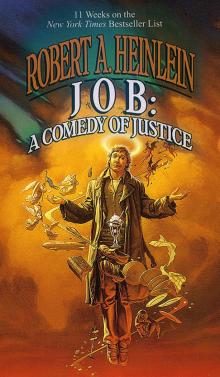 Job: A Comedy of Justice
Job: A Comedy of Justice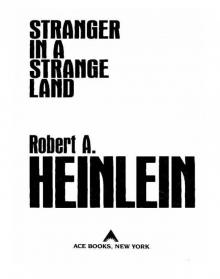 Stranger in a Strange Land
Stranger in a Strange Land The Worlds Of Robert A Heinlein
The Worlds Of Robert A Heinlein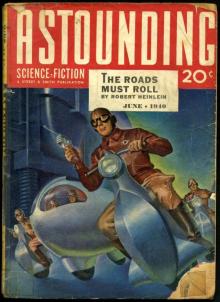 The Roads Must Roll
The Roads Must Roll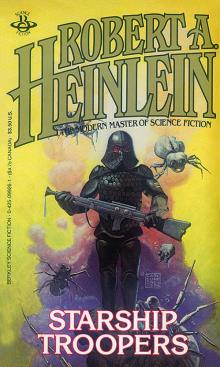 Starship Troopers
Starship Troopers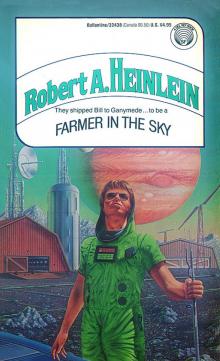 Farmer in the Sky
Farmer in the Sky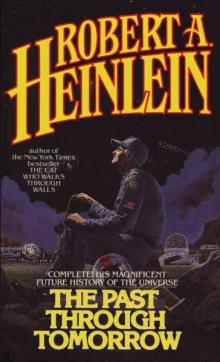 The Past Through Tomorrow
The Past Through Tomorrow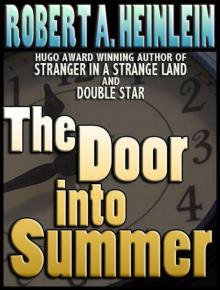 The Door Into Summer
The Door Into Summer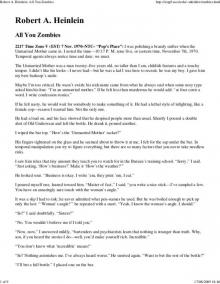 All You Zombies
All You Zombies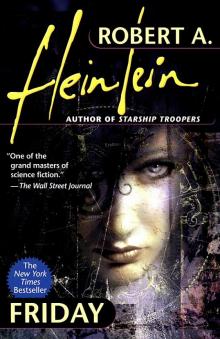 Friday
Friday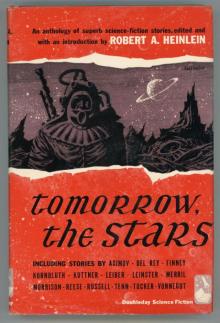 Tomorrow, the Stars
Tomorrow, the Stars The Notebooks of Lazarus Long
The Notebooks of Lazarus Long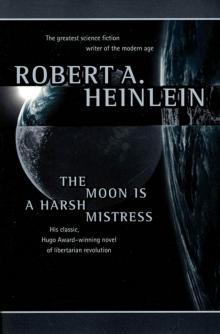 The Moon Is a Harsh Mistress
The Moon Is a Harsh Mistress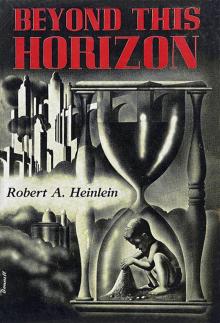 Beyond This Horizon
Beyond This Horizon Time Enough for Love
Time Enough for Love Tunnel in the Sky
Tunnel in the Sky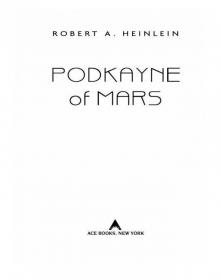 Podkayne of Mars
Podkayne of Mars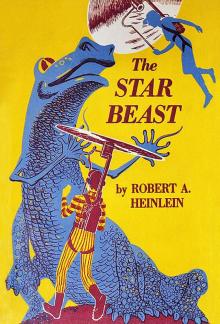 The Star Beast
The Star Beast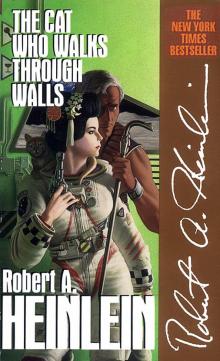 The Cat Who Walks Through Walls
The Cat Who Walks Through Walls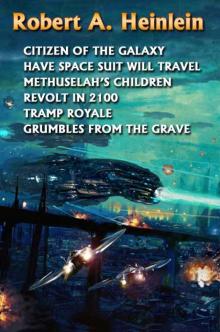 Grumbles From the Grave
Grumbles From the Grave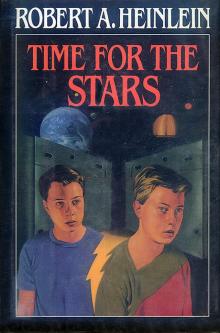 Time for the Stars
Time for the Stars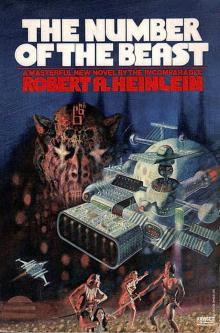 The Number of the Beast
The Number of the Beast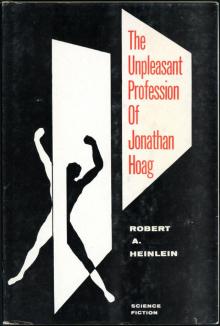 The Unpleasant Profession of Jonathan Hoag
The Unpleasant Profession of Jonathan Hoag Sixth Column
Sixth Column To Sail Beyond the Sunset
To Sail Beyond the Sunset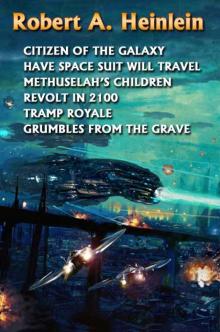 Revolt in 2100
Revolt in 2100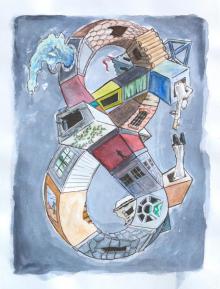 And He Built a Crooked House
And He Built a Crooked House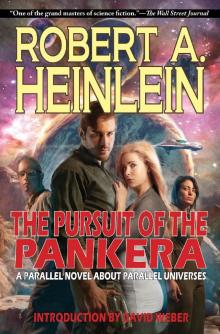 The Pursuit of the Pankera: A Parallel Novel About Parallel Universes
The Pursuit of the Pankera: A Parallel Novel About Parallel Universes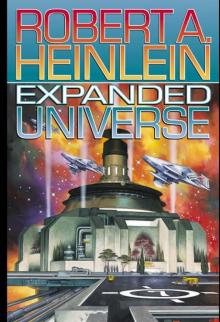 Expanded Universe
Expanded Universe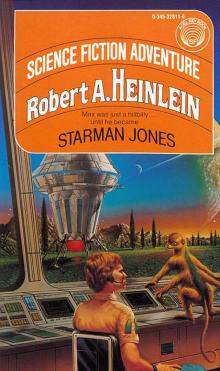 Starman Jones
Starman Jones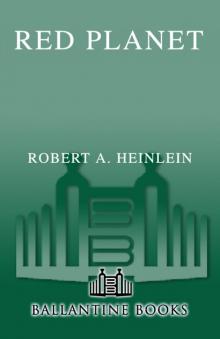 Red Planet
Red Planet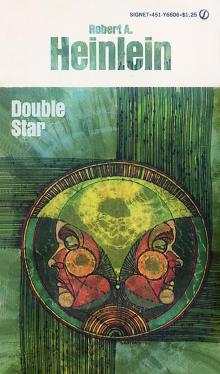 Double Star
Double Star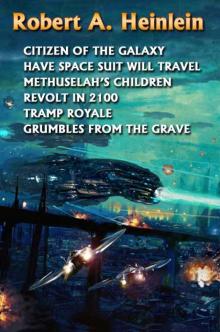 Citizen of the Galaxy
Citizen of the Galaxy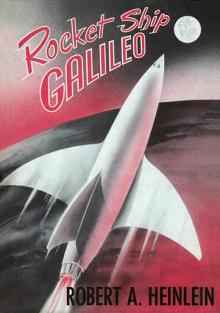 Rocket Ship Galileo
Rocket Ship Galileo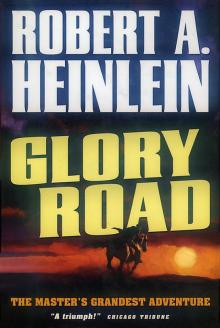 Glory Road
Glory Road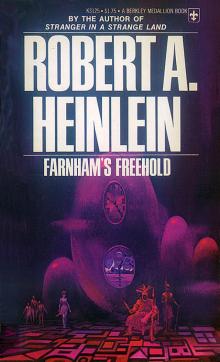 Farnham's Freehold
Farnham's Freehold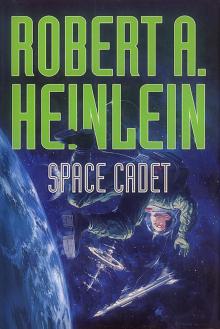 Space Cadet
Space Cadet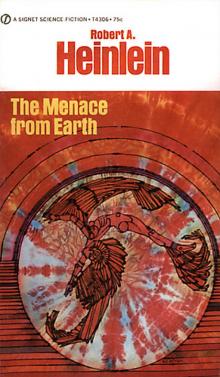 The Menace From Earth ssc
The Menace From Earth ssc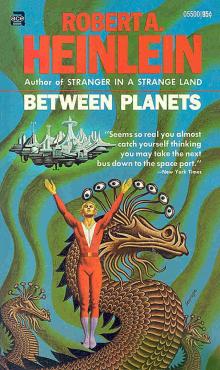 Between Planets
Between Planets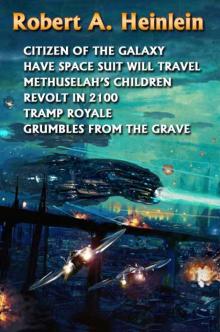 Methuselah's Children
Methuselah's Children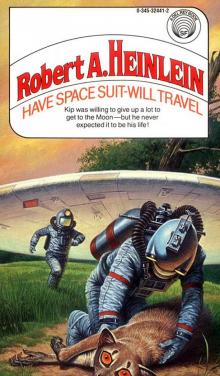 Have Space Suit—Will Travel
Have Space Suit—Will Travel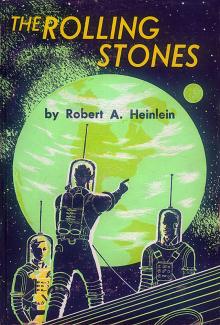 The Rolling Stones
The Rolling Stones Door Into Summer
Door Into Summer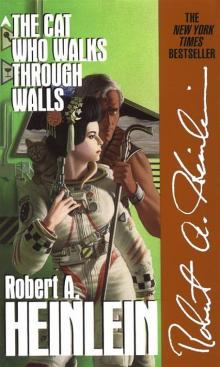 The Cat Who Walked Through Walls
The Cat Who Walked Through Walls Magic, Inc
Magic, Inc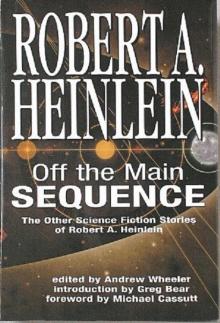 Off The Main Sequence
Off The Main Sequence Pied Piper
Pied Piper The Unpleasant Profession Of Jonathan Hoag And Other Stories
The Unpleasant Profession Of Jonathan Hoag And Other Stories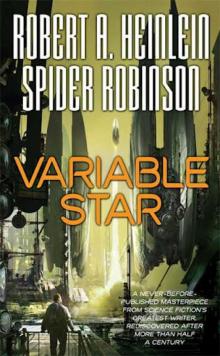 Variable Star
Variable Star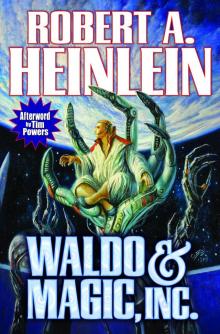 Waldo, and Magic, Inc
Waldo, and Magic, Inc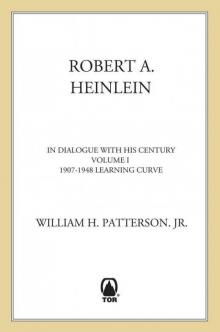 Robert A. Heinlein: In Dialogue With His Century
Robert A. Heinlein: In Dialogue With His Century Waldo
Waldo Bulletin Board
Bulletin Board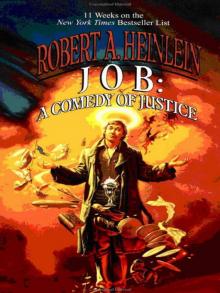 Job: A Comedy
Job: A Comedy Tramp Royale
Tramp Royale A Tenderfoot in Space
A Tenderfoot in Space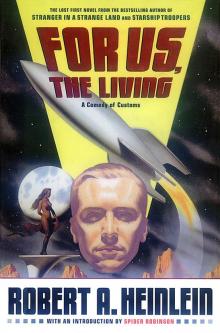 For Us, the Living
For Us, the Living Destination Moon
Destination Moon Logic of Empire
Logic of Empire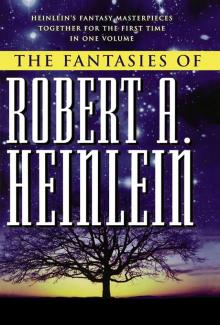 The Fantasies of Robert A. Heinlein
The Fantasies of Robert A. Heinlein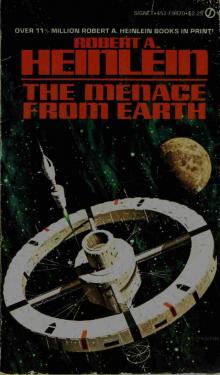 The Menace From Earth
The Menace From Earth From the Notebooks Of Lazarus Long
From the Notebooks Of Lazarus Long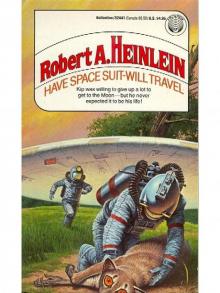 Have Space Suit - Will Travel
Have Space Suit - Will Travel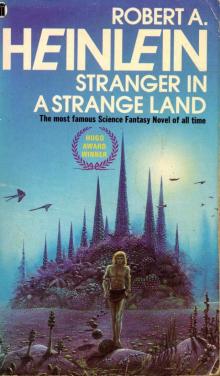 A Stranger in a Strange Land
A Stranger in a Strange Land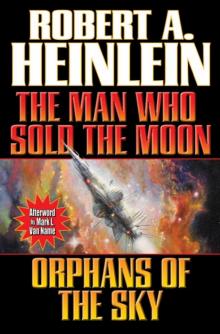 Man Who Sold the Moon / Orphans of the Sky
Man Who Sold the Moon / Orphans of the Sky